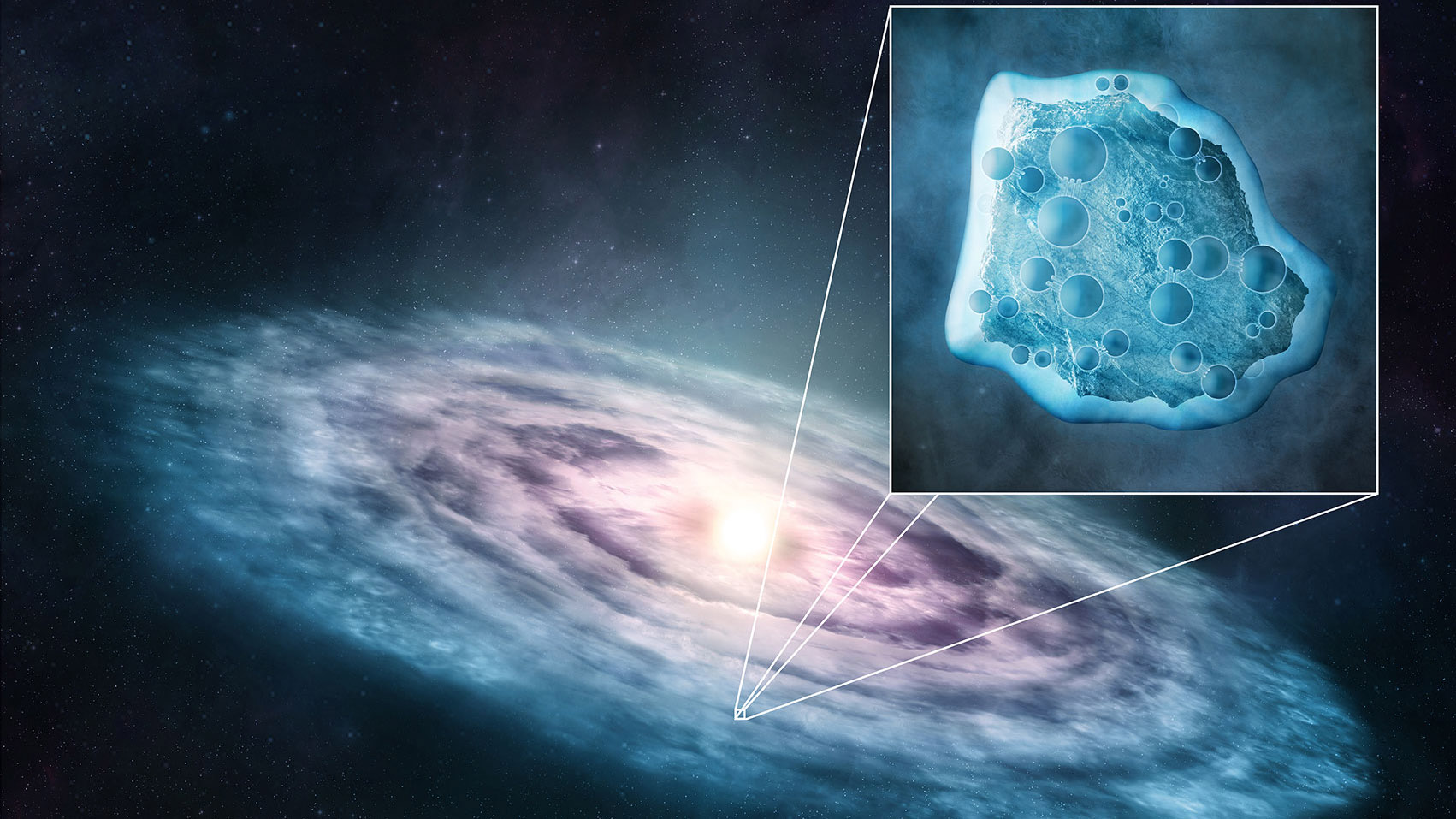Missing carbon monoxide in planetary nurseries could be frozen in ice
Large chunks of ice may be undetectable by telescopes, a new study suggests.

Carbon monoxide missing from dense clouds of gas and dust in which planets form around new-born stars may be hiding in large chunks of invisible ice, a new study reveals
For decades, astronomers have been studying protoplanetary disks, the thin planet-birthing nebulas around stars, searching for carbon monoxide. This gas, highly poisonous for humans, has an important role to play in modeling planet formation. Its bright color helps astronomers create models of the protoplanetary disks and understand what's going on inside them.
Yet, although carbon monoxide must be extremely common in these disks, observations have revealed the compound isn't present in the abundances that calculations predict, and until today, astronomers had no clue where it might be hiding.
Related: James Webb Space Telescope snags its 1st direct photo of an alien world
"Depending on the system observed, carbon monoxide is three to 100 times less than it should be, it's off by a really huge amount," Diana Powell, a NASA Hubble Fellow at the Center for Astrophysics, Harvard & Smithsonian, said in a statement. "This may be one of the biggest unsolved problems in planet-forming disks."
This discrepancy could have important implications for our understanding of the building blocks that go into planet formation, she added.
"Carbon monoxide is essentially used to trace everything we know about disks — like mass, composition, and temperature," Powell said. "This could mean many of our results for disks have been biased and uncertain because we don't understand the compound well enough."
Breaking space news, the latest updates on rocket launches, skywatching events and more!
Powell and her team recently created a new model of distribution of carbon monoxide in planetary disks. Unlike previous models, the new model takes into account phase changes such as the shift of a gas to a solid material that happens at certain temperatures for various compounds. It turned out that this one variable could explain why so much carbon monoxide seems to be missing from planet-forming disks.
"What's really special about this model is that it has detailed physics for how ice forms on particles," Powell explained. "So how ice nucleates onto small particles and then how it condenses."
She added that the new model carefully tracks the location of ice down to determining what particle is carrying it, the size of these particles, and how they are moving.
Applying this model to protoplanetary disks, the scientists set about understanding the evolution of carbon monoxide in planetary nurseries and then confirmed the results using observational data collected by the Atacama Large Millimeter/submillimeter Array (ALMA) in Chile, one of the most powerful radio telescopes in the world.
The study revealed that four protoplanetary disks around young stars in the Milky Way that Powell and colleagues focused on weren't missing carbon monoxide at all. Instead they had the gas frozen and locked up in ice.
The team's results suggest that after a million years or so of carbon monoxide being abundant as gas, and thus detectable, the compound begins to condense on large particles of ice. This ice (and the carbon monoxide with it) isn't currently detectable with telescopes.
"This changes how we thought ice and gas were distributed in disks," Powell said. "It also shows that detailed modeling like this is important to understand the fundamentals of these environments."
Powell now hopes to follow this research and confirm this carbon monoxide ice model with observations collected by the James Webb Space Telescope (JWST). As the most powerful space-based telescope humanity has ever put into orbit, the JWST may be just powerful enough to spot ice in protoplanetary disks.
The team's research is published in the latest edition of Nature Astronomy.
Follow us on Twitter @Spacedotcom and on Facebook.

Robert Lea is a science journalist in the U.K. whose articles have been published in Physics World, New Scientist, Astronomy Magazine, All About Space, Newsweek and ZME Science. He also writes about science communication for Elsevier and the European Journal of Physics. Rob holds a bachelor of science degree in physics and astronomy from the U.K.’s Open University. Follow him on Twitter @sciencef1rst.
